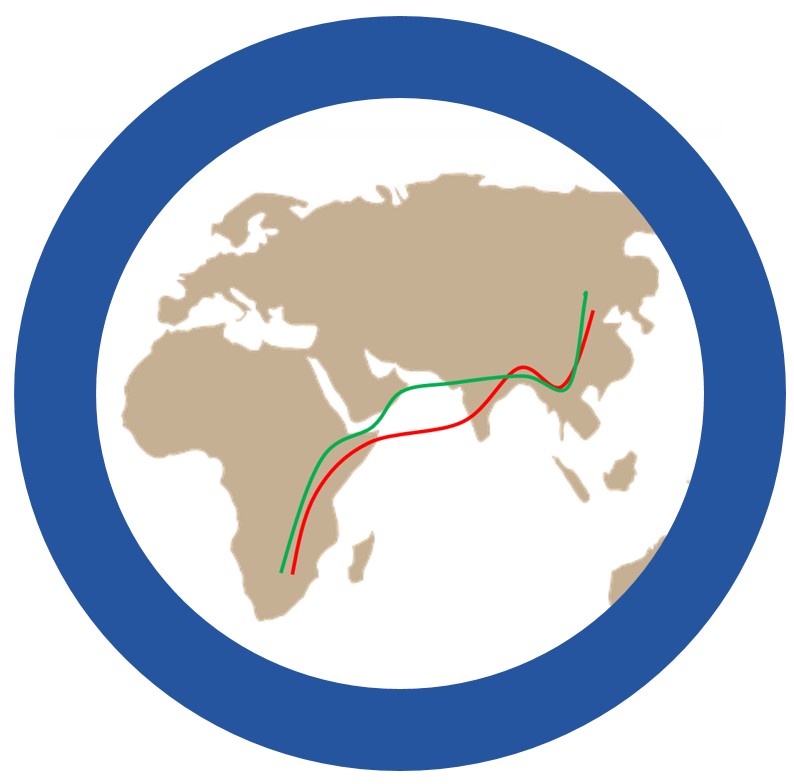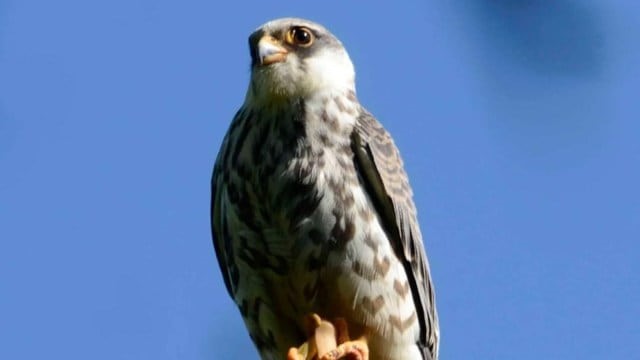World Rhino Day
World Rhino Day is celebrated worldwide recently.
- World Rhino Day is celebrated each year on 22 September.
- Aim- It is dedicated to raising awareness about the critical conservation status of rhinoceroses and the threats they face.
- It highlights the need to conserve the 5 rhino species in the world.
- The first world rhino day was announced by World Wildlife Fund South African in 2010.
- Since its inception in 2011, it has united conservationists, wildlife enthusiasts, and governments worldwide.
- It addresses key issues like poaching and habitat loss.
|
IUCN Protection Status of Rhinos
|
- There are totally 5 species of rhinoceros globally.
- Critically Endangered – 3 species, Black, Javan and Sumatran.
- Near Threatened – White Rhino (Northern White is Critically Endangered).
- Vulnerable – Greater One Horned Rhino.
|
- Rhino Population in India - India is home to greater one horned rhinoceros.
- Kaziranga National park in Assam contains the largest number of greater one horned rhinoceros.
- Project Rhino in India - Project Rhino is an initiative that aims to protect India’s rhino population.
- It focuses on preventing poaching, improving habitats, and raising public awareness.
- The project collaborates with conservation groups and government agencies to ensure rhino survival.
- Project Rhino focuses on enhancing habitat management.
- It strengthens law enforcement to combat poaching threats.
- Relocation of rhinos to safer areas has improved their security.
- Indian Rhino Vision 2020 (IRV 2020) - It is a flagship conservation program aimed at increasing the population of the Greater One-Horned rhino in Assam, focusing primarily on areas where rhino had gone extinct.
The rhino finds a mention in the Baburnama, the autobiography of Babur, Founder of Mughal Empire written initially in Chagatai Turkic and later translated into Farsi or Persian.
Reference
Down to Earth | World Rhino Day 2024
Saturn-like ring on Earth
A study suggested that earth may have once had a Saturn-like ring formed from the debris of a destroyed asteroid around 466 million years ago.
- Findings of the study -The ring persisted for tens of millions of years during the Ordovician period.
The Ordovician period was a geologic period that occurred between 485.4 and 443.8 million years ago
- It formed when an asteroid passed too close to Earth, was stretched by its gravity to the point it broke down into lots of small and large pieces.
- These pieces jostled around and gradually evolved into a debris-laden ring orbiting Earth’s equator.
- However, over time the material from the ring was pulled towards Earth, once again courtesy gravity.
- While most of the smaller pieces would have been burnt up in the planet’s atmosphere, the larger pieces would have formed impact craters on Earth surface, close to the equator.
- These impact craters that led the scientists to discover the existence of a ring around Earth.
- Analysis of 21 crater sites dated to between 488 million and 443 million years ago to the Ordovician period, found that the impacts all occurred close to the equator.
- Impact on Earth - A ring over Earth’s equator would have had a profound impact on the planet.
- Giant Parasol- The axial tilt of Earth relative to the Sun would mean that such a ring would shade winter hemispheres of the planet, while slightly increasing solar flux, amount of solar energy to reach Earth to the summer hemispheres.
- This could accentuate winter cooling while slightly increasing summer heating.
- Overall, scientists theorise that a ring would lead to global cooling by effectively acting as a giant parasol.
- Dramatic Cooling - The period in which the ring existed Earth did witness dramatic cooling.
- By 445 million years ago Earth was seeing the peak of the Hirnantian Ice Age, the coldest period in the past half a billion years.
- The study suggests Earth’s ancient ring may have contributed to significant climate changes, but further investigation is needed.
- The next step is creating mathematical models to study how asteroid debris disperses and how such rings could influence Earth's climate, particularly the cooling effect.
Reference
Indian Express|Formation of Earth's Ring
Palomar 5
Astrophysicists suggests in a recent study that a stellar cluster known as Palomar 5 may harbor a hidden swarm of over 100 stellar-mass black holes.
- Palomar 5 is classified as a globular cluster, dense and spherical, typically containing between 100,000 and 1 million ancient stars.
- These clusters are often regarded as ‘fossils’ from the early Universe.
- Discovery - Palomar 5 was discovered by Walter Baade in 1950 and independently by Albert George Wilson in 1955.
- Age - Palomar 5 is estimated to be around 11.5 billion years old.
- Location - Palomar 5 is located in the constellation Serpens, about 65,000 light-years from Earth.
- Tidal tails - It has two massive tidal tails that stretch across more than 20 degrees of the sky. These tails contain more mass than the cluster itself and show evidence of stellar density gaps and clumps.
- Black holes - Palomar 5 has more than 100 black holes, which is about three times more than expected for a globular cluster. Each black hole has a mass of about 20 times the mass of the sun.
- Density - Palomar 5 has a relatively low mass and an average density among the lowest of all globular clusters in the Milky Way.
- Disruption - Palomar 5 is being disrupted by the Milky Way's gravity, and many stars are leaving the cluster in the form of a stellar stream.
- Recent study reveals that Palomar 5 will dissolve in approximately 1 billion years, leaving behind a trail of black holes orbiting the Milky Way’s center.
- This discovery suggests other clusters may face a similar fate, underscoring the importance of globular clusters in detecting black hole collisions and intermediate-mass black holes.
|
Globular clusters
|
- These clusters are stable, tightly bound clusters of tens of thousands to millions of stars. They are associated with all types of galaxies.
- Globular clusters are typically much larger than open clusters and are tightly gravitationally bound.
- They are far more densely populated, with populations ranging from tens of thousands to millions of stars.
- The intense gravitational attraction between the closely packed stars gives globular clusters their regular, spherical shape.
- They are populated by older, redder stars than open clusters (which might disperse before their stars can become really old).
- Their considerable gravitational attraction makes them very stable, and therefore they can be extremely long-lived, surviving to be billions of years old.
|
Reference
The Indian Express | Palomar 5 -Milky Way’s star cluster
Food Import Rejection Alerts (FIRA) Portal
FIRA portal launched recently during the second edition of the Global Food Regulators Summit 2024 hosted by FSSAI at Bharat Mandapam in New Delhi.
- Aim - It is an online portal designed to notify the public and relevant food safety authorities about food import rejections at Indian borders.
- Developed by - The Food Safety Standards Authority of India (FSSAI).
- Features - It will generate alerts on a food consignments rejected by India due to poor safety standards
- It will also enable relevant food authorities to take immediate action for prevention and control of risks before it causes harm.
- The new portal has an online interactive interface for rapid dissemination of information to ensure enhanced traceability and transparency.
- It also serves as a valuable database for tracking rejected food products and for further strengthening of the risk management system.
Food Safety and Standards Authority of India (FSSAI)
- The Food Safety and Standards Authority of India is an independent statutory body under the Ministry of Health and Family Welfare.
- Aim - It regulates the manufacture, storage, distribution, sale, and import of food articles, while also establishing standards to ensure food safety.
- It is established under the Food Safety and Standards Act, 2006.
- Headquarters - New Delhi.
- Functions
- Setting standards - The FSSAI sets science-based standards for food, including horizontal standards that apply to various food categories and vertical standards that apply to specific food products.
- Regulating food - The FSSAI regulates the manufacture, storage, distribution, sale, and import of food.
- Providing technical support - The FSSAI provides scientific advice and technical support to the government.
- Inspecting food - It inspects the food premises of the FBOs and grants the FSSAI license, a mandatory requirement to carry on the food business.
- Issuing license - The FSSAI issues a 14-digit license number to the Food Business Operators (FBOs) who comply with the regulations and rules under the FSS Act.
- Promoting awareness - The FSSAI promotes awareness about food safety and standards.
References
- PIB | Global Food Regulators Summit 2024
- News on Air | FSSAI Global Food Regulators Summit 2024
Amur Falcons
The Tamenglong district in Manipur has imposed a ban on hunting, catching, killing, and selling Amur falcons ahead of their migratory arrival.
- It is a small migratory bird of prey that belongs to the family Falconidae. The birds are locally known as ‘Kahuaipuina’.
- Scientific name- Falco amurensis.
- Size- It is small raptors, measuring around 28-30 cm in length.
- Migratory pattern- In autumn the amur falcons leave their breeding grounds in the Amur River region in northeastern Asia, and start their journey south.
- First they head south, to round the Himalayas, and then stop in Nagaland, northeastern India.
- When leaving Nagaland, they head south again, either crossing the Bengal Bay or taking an inland route over India, to reach the Western Ghats and the west coast of India.
Nagaland has earned the well-deserved title of 'Amur Falcon capital of the world'.
- From the Indian coast, they start crossing the Indian Ocean. They steer their way through east Africa, to finally arrive in South Africa.
- These falcons are long-distance migrants. They undertake one of the most remarkable migrations of any raptor, traveling around 22,000 kilometres annually.

- Breeding - Breeds in South-east Russia and northern China.
- Diet - Amur falcons are carnivores (insectivores).
- Conservation Status
- IUCN Status- Least Concern.
- Wildlife Protection Act, 1972 - Schedule IV.

References
- Indian Express | Amur falcon
- Ecosystemsinthesky | Falco amurensis

